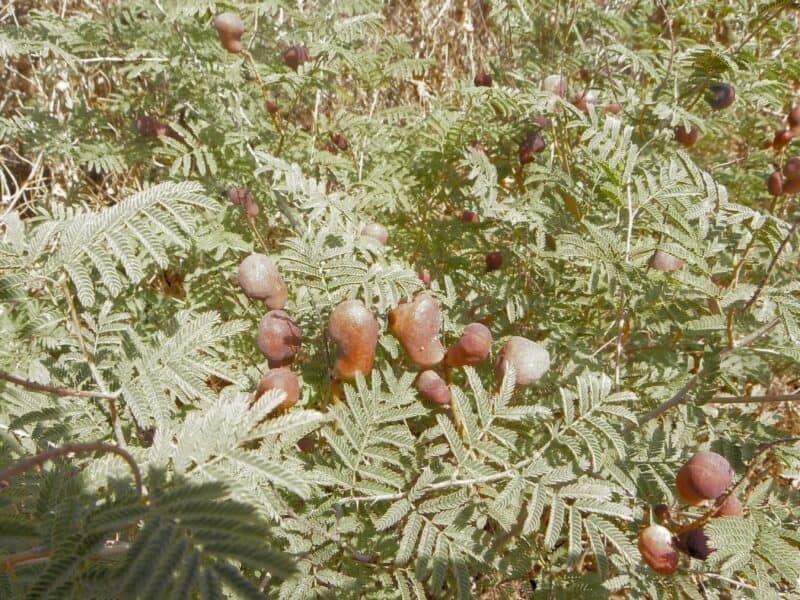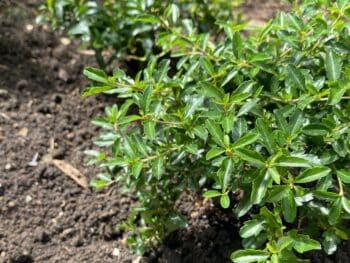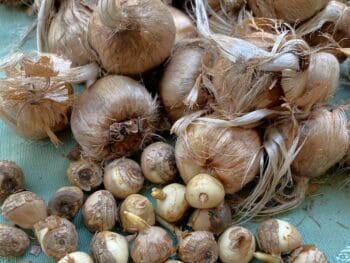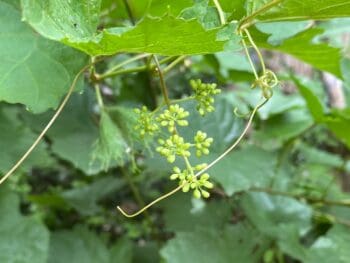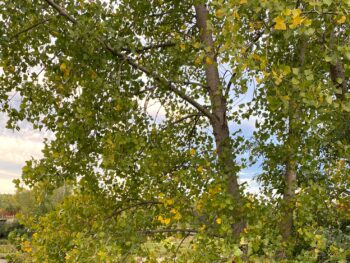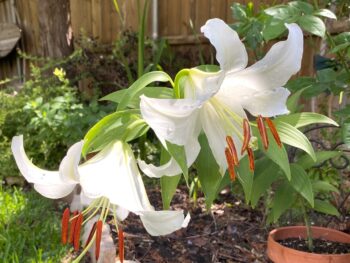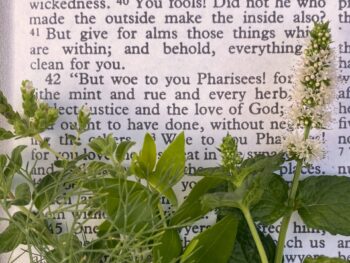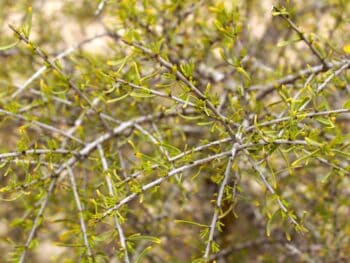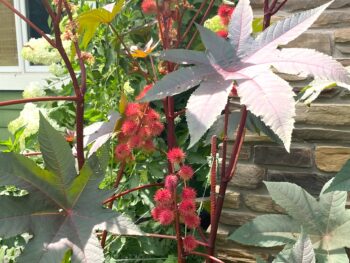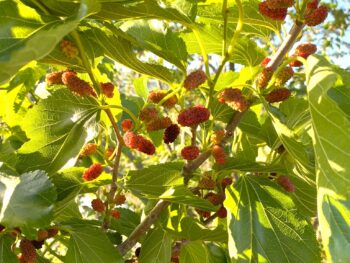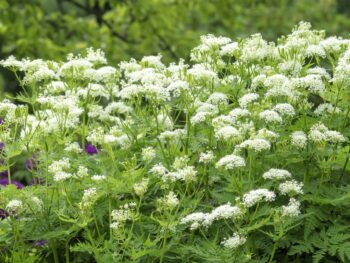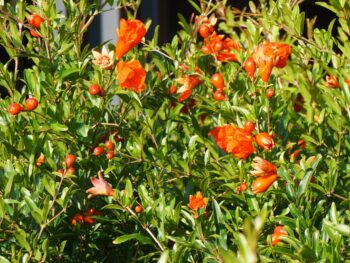No—we will not be discussing compost, dear gardeners, as one might assume from a title like “dove’s dung.” Yet how could such a politely putrid phrase possibly lead us in garden devotions? Meet one of the Bible’s most peculiar moments, a slightly-above-mucky mention of what most historians, scholars, and botanists conclude was a colloquial plant name. The roughian reference helps emphasize the disparaging moment under siege in Samaria, when supplies were stretched, the economy went wildly speculative, and the people were desperate for deliverance.
And there was a great famine in Samar′ia, as they besieged it, until an ass’s head was sold for eighty shekels of silver, and the fourth part of a kab of dove’s dung for five shekels of silver. 2 Kings 6:25 RSV
What brings us to this tumultuous passage of Scripture at this time? New research was published recently to dig deeper into the mystery of which plant had become the outrageously priced substitute for daily bread. The Journal of Ethnobiology featured research by Amots Dafni and Barbara Bock, of Israel and Spain respectively, entitled “A Review of Ethnobotanical, Ecological and Lexical Evidence to Identify a Biblical Plant.” View their Abstract here.
I am so grateful for my years working with Barney L. Lipscomb at the Botanical Research Institute of Texas. As Head of BRIT Press, he regularly reviews botanical articles and shared this latest research with me, which I am excited to pass on to you, dear gardeners, to carry on our passionate pursuit of plants of the Bible.
Traditional Dove’s Dung Species
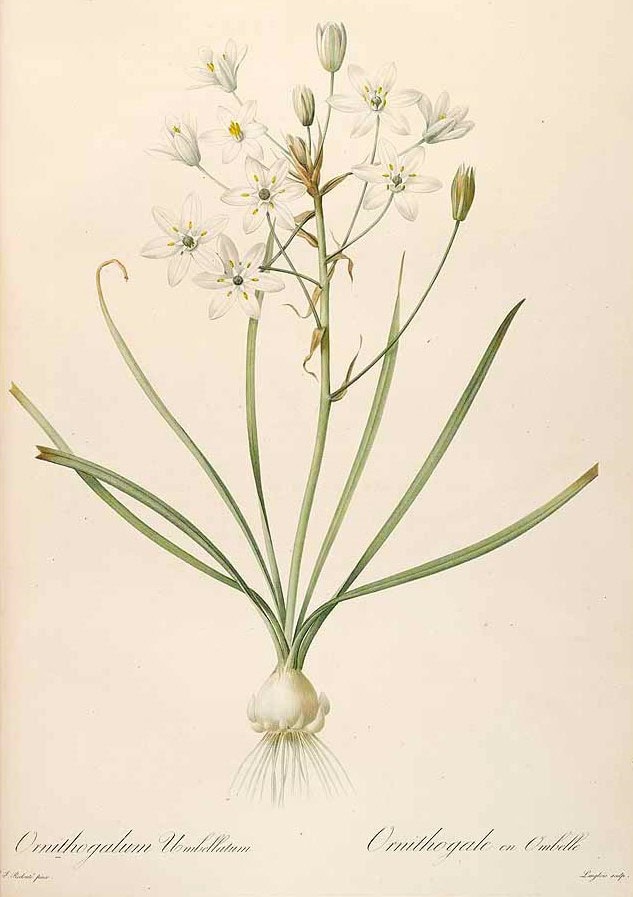
Over the centuries, the Hebrew word dibyown in 2 Kings 6–7 has been attributed to the flower species star of Bethlehem, Ornithogalum umbellatum. I have always though it a bit odd to name a flower after bird droppings, though I hardly have the scholarship to debate Carl Linnaeus, who solidified the association by naming the Ornithogalum genus with gentle discretion as “bird’s milk” in Latin. O. umbellatum grew in abundance in the region of Samaria in ancient times, spreading in huge swaths…that looked like birds had relieved themselves across the mountainsides…??? Hmmm, I can see why the researchers were ready to dig deeper to discover a more likely plant species.
Meet Syrian Mesquite

Dafni and Bock concluded after extensive examination into sources in botany, taxonomy, historic Jewish scholarship, and Semitic languages, that Syrian mesquite, Prosopis farcta, is the most likely plant identified as “dove’s dung.” Whew! A thorny, scruffy shrub seems more appropriate than a starry, lovely flower for the down-and-dirty nature of this torrential turn-of-events.
This shrub from the Fabaceae or legume family was known as “dove’s feces,” or similarly “dove’s dung” in Akkadian, a Semitic language in use in neighboring Mesopotamia and Assyria. From delicate, yellow, spring-flowering racemes form brown, nugget-like fruits, which are edible, though certainly not preferable, to be processed as grain flour. Dafni and Bock discovered that foraging for these pods was a possible practice of ancient peoples in famine years.
Don’t Plant This at Home!
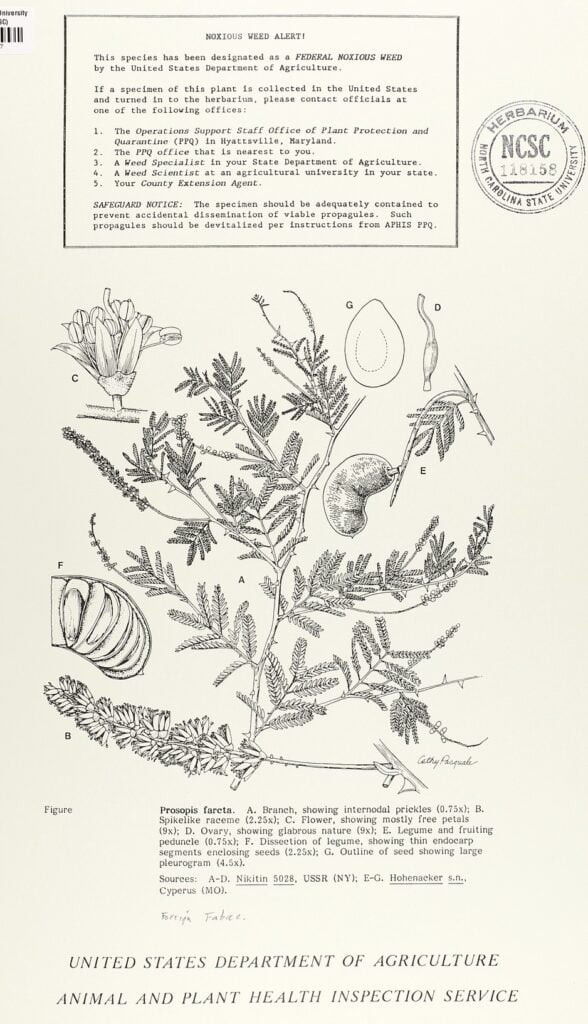
Prosopis farcta is on the USDA Noxious Plant List, so I am not proposing to plant this at home! Furthermore, the plant becomes established deep in the soil and can overtake fields by runners; truly it is nearly impossible to be rid of, as plowed plants will send up new shoots. It is deciduous, losing its leaflets and nearly disappearing from the landscape, only to return vigorously to near-invasive levels in spring. Sounds like northern gardeners’ complaints about star of Bethlehem, funny coincidence!
Syrian mesquite, like its mesquite cousins, is thorny and may also be a background thornbush in other Scripture passages.
Planting Possibility
Let’s not miss the point of the story, since we are studying a thornbush, after all. The distastefulness of dove’s dung fare for the Samarians—and returning to normal prices and provisions in one day, wow!—showcases Syrian mesquite as a plant holding ground for God’s possibilities.
Elisha replied, “Hear the word of the Lord! This is what the Lord says: ‘About this time tomorrow at the gate of Samaria, six quarts of fine meal will sell for a shekel and 12 quarts of barley will sell for a shekel.’” Then the captain, the king’s right-hand man, responded to the man of God, “Look, even if the Lord were to make windows in heaven, could this really happen?” Elisha announced, “You will in fact see it with your own eyes, but you won’t eat any of it.”… Then the people went out and plundered the Aramean camp. It was then that six quarts of fine meal sold for a shekel and 12 quarts of barley sold for a shekel, according to the word of the Lord. 2 Kings 7:1-2, 16 HCSB
Elisha prophesied a prompt deliverance from their troubles, the seemingly impossible likelihood evident in the right-hand man’s faithlessness. While we won’t be planting dove’s dung, remember with me other plants of the Bible representing the Lord’s all-things-are-possible reality that are better suited to garden cultivating.
Mustard Seeds. The poster child of Biblical plants, mustard fills a field faster than Syrian mesquite, so to speak, connecting our cultivating hearts to what is possible with God and His love of small beginnings. Mustard likes cooler temperatures, so get a few seeds packets ready for fall sowing if you have hot summers.
The kingdom of heaven is like a mustard seed, which a man took and planted in his field. Though it is the smallest of all seeds, yet when it grows, it is the largest of garden plants and becomes a tree, so that the birds come and perch in its branches. Matthew 13:31-32 NIV
Do not despise this small beginning, for the eyes of the Lord rejoice to see the work begin, to see the plumb line in the hand of Zerubbabel. Zechariah 4:10 TLB
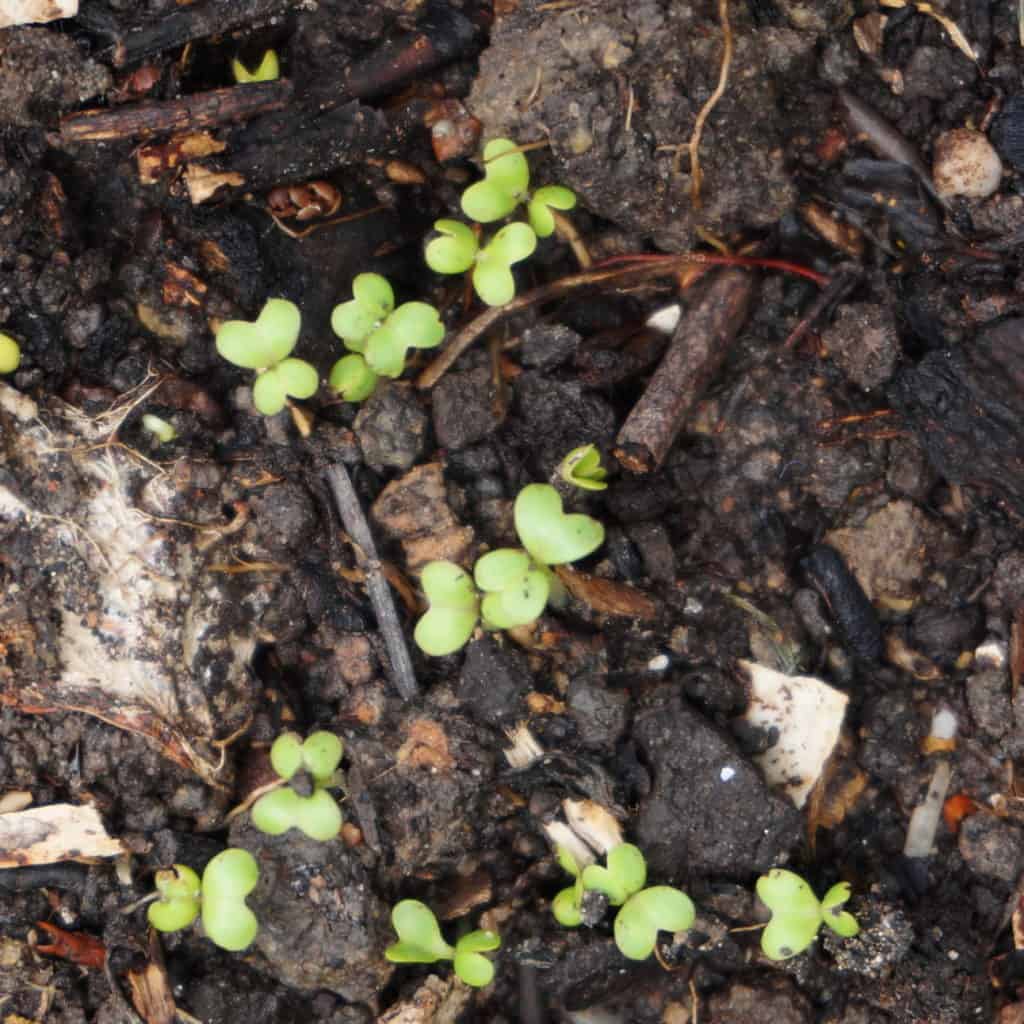
Mulberry Trees. The mountain-of-a-tree mulberry calls us to call on God’s possibilities, commissioning in faith to establish kingdom ways on earth. All the mulberry trees are fairly easy to grow; red mulberry, Morus rubra, is native to the U.S. and black mulberry, M. nigra is most-likely the Biblical species proper. Fruit production becomes more robust after being established for 5 to 15 years, and the trees have a long lifespan in rich soil with minimal care.
The Lord replied, “If you had faith as tiny as a mustard seed, you could say to this mulberry tree, ‘Be uprooted and planted in the sea,’ and it would obey you. Luke 17:6 NCB
And it shall be, when you hear the sound of marching in the tops of the mulberry trees, then you shall advance quickly. For then the Lord will go out before you to strike the camp of the Philistines. 2 Samuel 5:24 NKJV
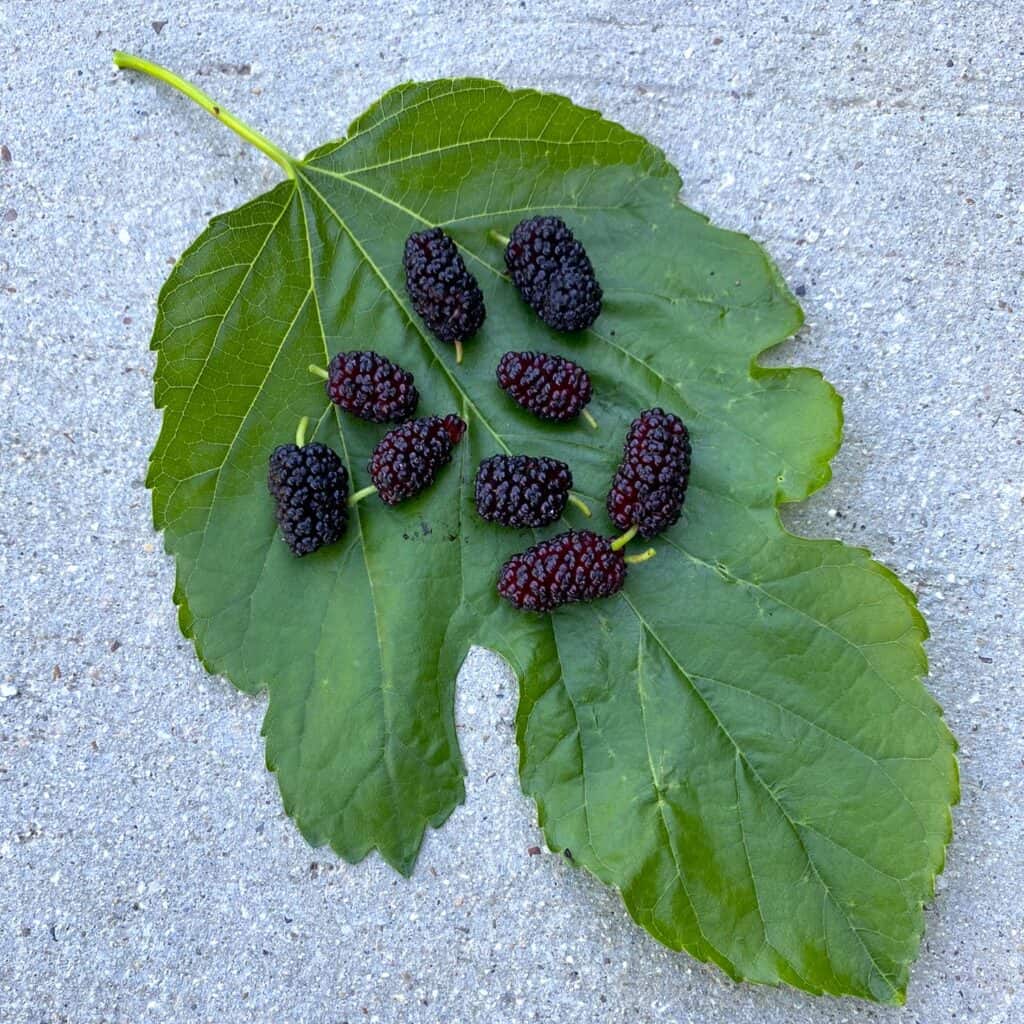
Olive Leaf. The small leaf in the dove’s beak speaks volumes about God’s restoration and return to normal, even after catastrophic flood. Potted olive trees give a special grace to the garden and make a special evergreen decoration when you bring them inside in the cold months. See it all come back around to the dove!
When the dove returned to him in the evening, there in its beak was a freshly plucked olive leaf! Genesis 8:11 NIV
As long as the earth endures, seedtime and harvest, cold and heat, summer and winter, day and night will never cease.” Genesis 8:22 NIV

Closing Prayer
O Father, thank You for the blessings You put in our lives, even when we are too distraught to grasp them. You are always working and Your ways always prevail in goodness and growth and restoration. You are patient with us when we don’t understand, yet Your Spirit will yield understanding (Isaiah 11:2) when we yield to You. And in the meantime, our gardens can explain it all! And soothe broken and bewildered hearts with flowers and stars and abundant goodness. O Lord, bless all the families flooded and hurt and restore them in small gentle gestures and big, expansive moves. You are always with us and You win. In Jesus Name, Amen.
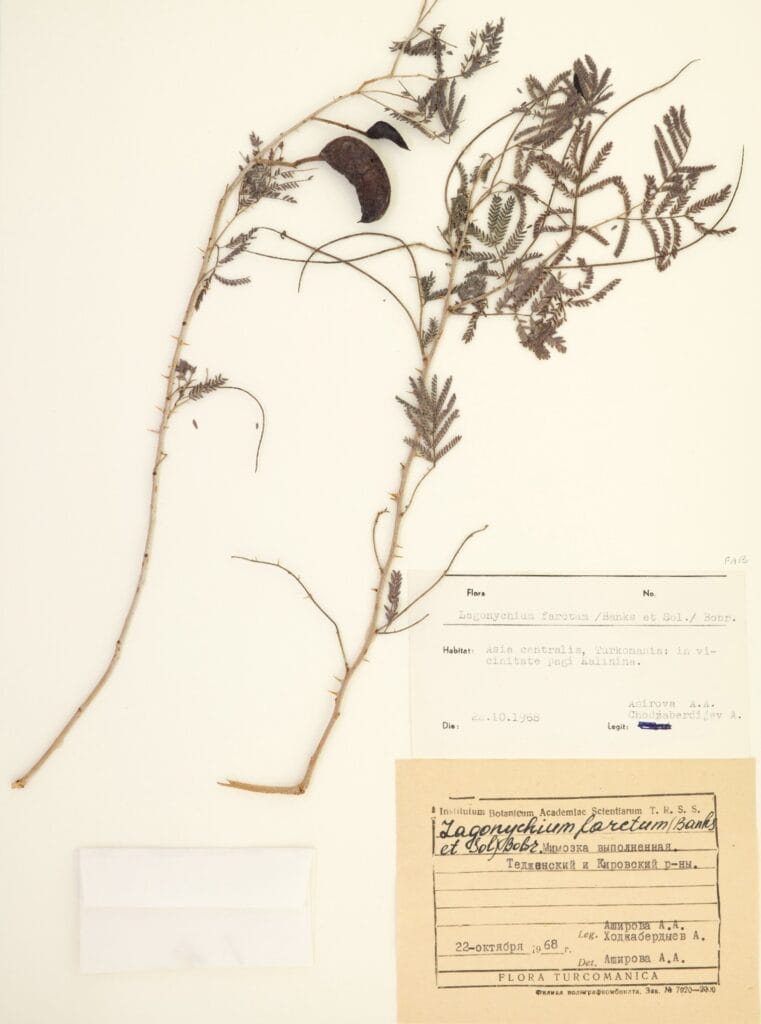
Jesus looked at them intently and said, “For humans this is impossible, but for God all things are possible.” Matthew 19:26 ISV


Research citation:
Dafni, A., & Böck, B. (2025). A Review of Ethnobotanical, Ecological and Lexical Evidence to Identify a Biblical Plant. Journal of Ethnobiology, 45(2), 175-181. https://doi.org/10.1177/02780771251325398 (Original work published 2025)
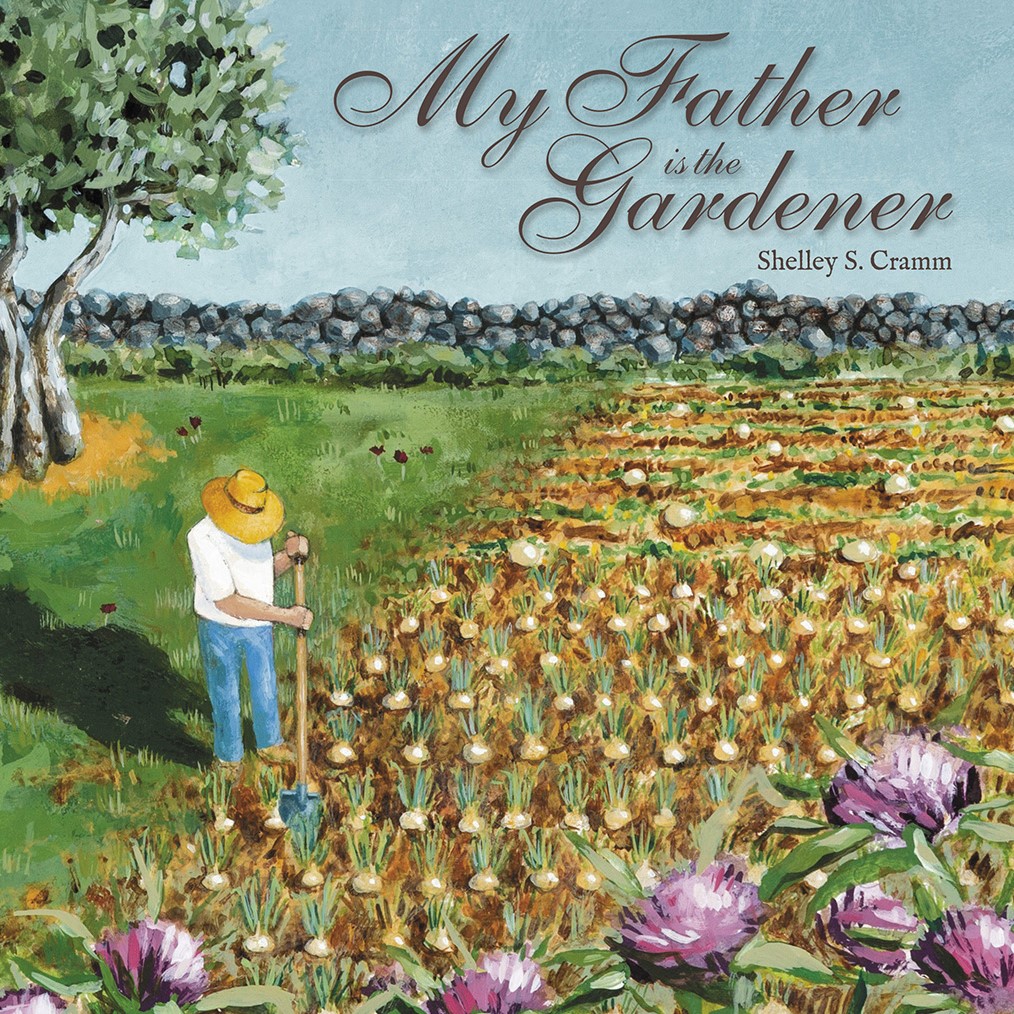
Nevertheless, dove’s dung makes a great garden-humor study of composting! Check out chapter 15 of My Father is the Gardener, “Composting & Dove’s Dung”
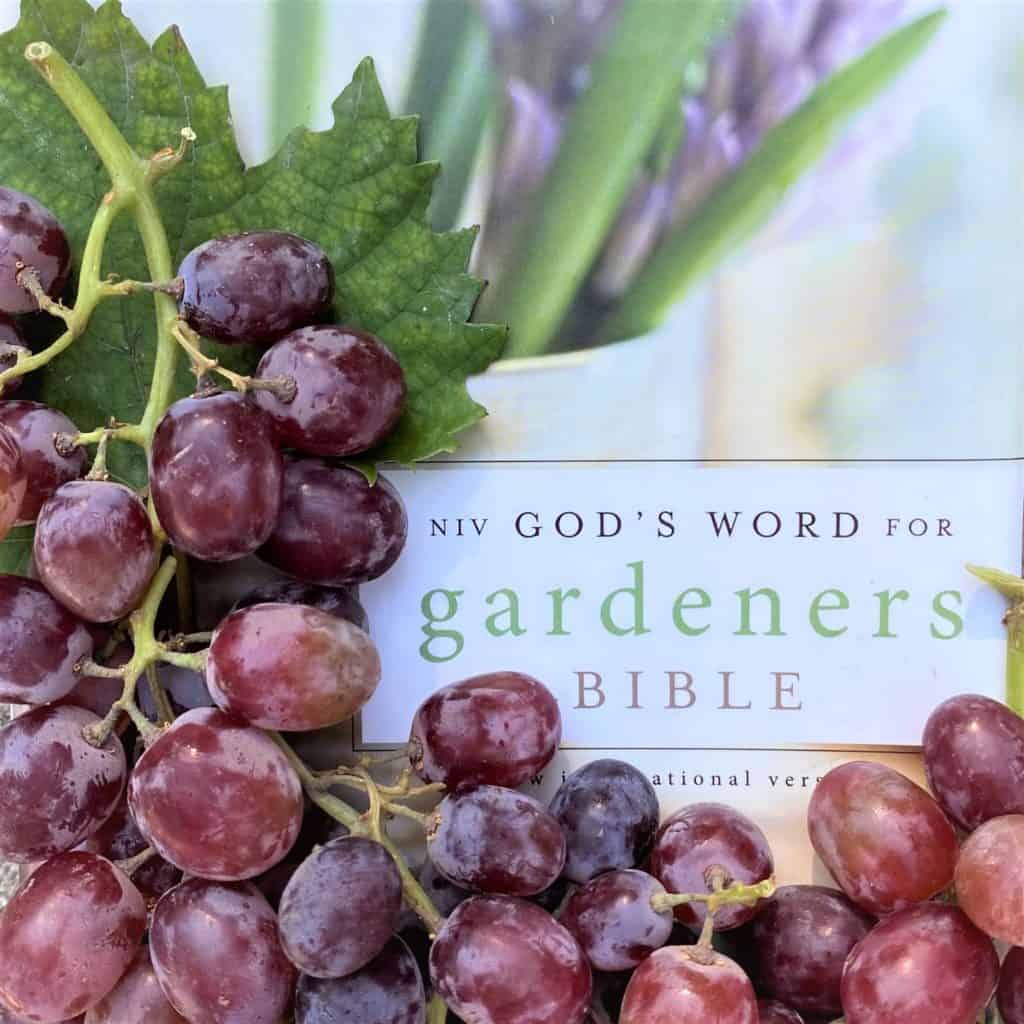
Read more about star of Bethlehem as the traditional plant assigend to “dove’s dung” in God’s Word for Gardeners Bible, in the Garden Work section beginning on page a-31
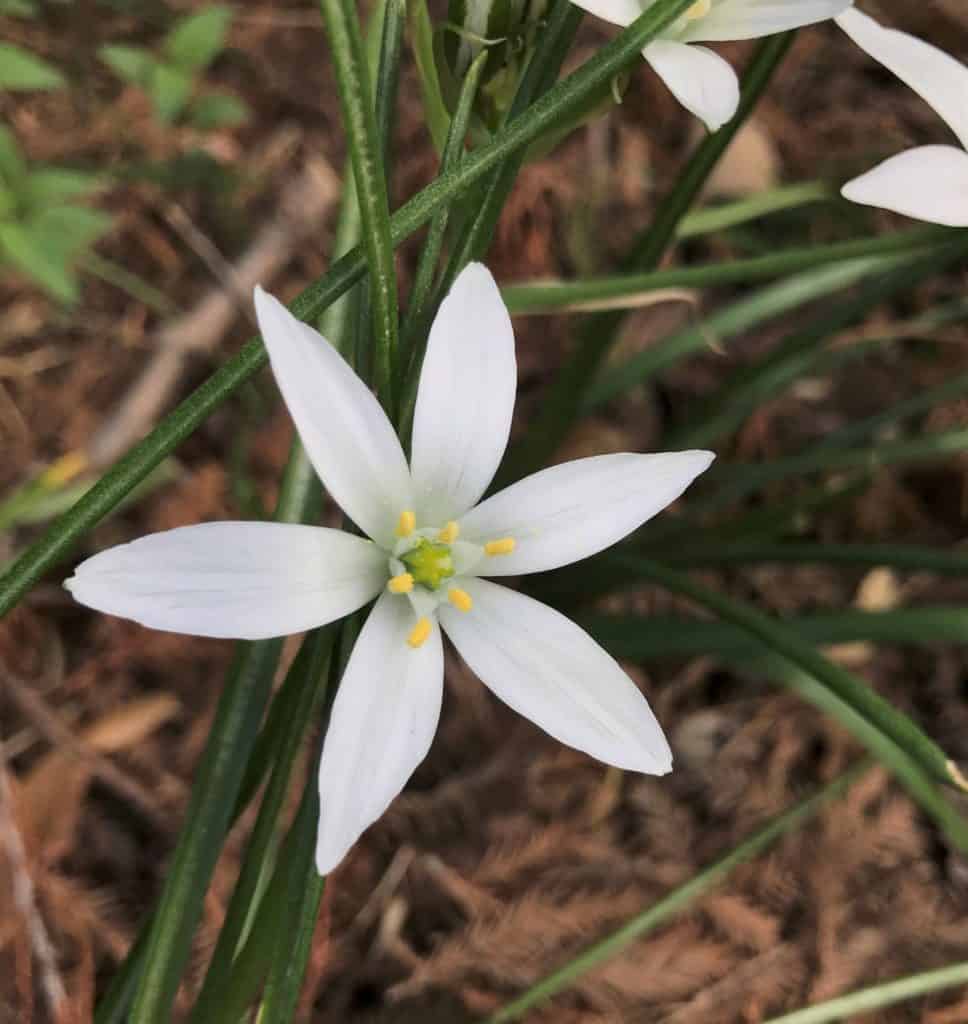
Learn more about planting start of Bethlehem in the Garden in Delight Plant Guide
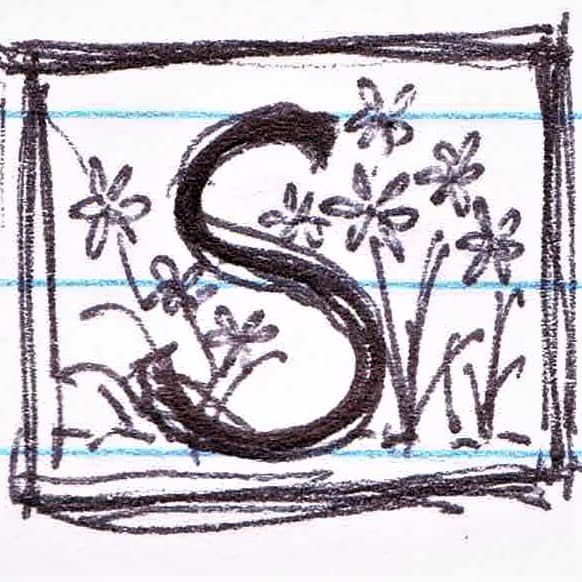
Discover the A-to-Z Poetry Primer of Plants from God’s Word – poetry is the best way to learn the pattering of God’s Word (maybe I’ll have to reqrite this as S is for Syrian mesquite, lol!) Enjoy!
Photo Credits: cover image: ©2009 איתן פרמן fruits on Prosopis farcta (Dwarf Mesquite) is Israel; c. 1802 Redoute, Pierre Joseph. Liliacées. Vol 3. (Paris: Chez l’auteur, 1802) Plate 143. image from Botanical Research Institute of Texas and plantillustrations.org; ©2022 Martin Scheuch Prosopis farcta shrub photographed in Tophane, Nicosia, island of Cyprus from inaturalist; Prosopis farcta illustration page from USDA publication with Noxious weed alert, courtesy North Carolina State University; dove with an olive leaf by Layla Luna, drawn exclusively for My Father is the Gardener, ©Shelley S. Cramm; and Prosopis farcta herbarium specimen (synonym Lagonychium farctum) courtesy University of Colorado Museum of Natural History Herbarium Vascular Plant Collection . All other images by Shelley S. Cramm
HCSB denotes Scripture quotations taken from the Holman Christian Standard Bible®, Copyright © 1999, 2000, 2002, 2003, 2009 by Holman Bible Publishers. Used by permission. Holman Christian Standard Bible®, Holman CSB®, and HCSB® are federally registered trademarks of Holman Bible Publishers.
ISV denotes Scripture quotations from The Holy Bible: International Standard Version. Release 2.0, Build 2015.02.09. Copyright © 1995-2014 by ISV Foundation. ALL RIGHTS RESERVED INTERNATIONALLY. Used by permission of Davidson Press, LLC.
NCB denotes Scripture taken from the SAINT JOSEPH NEW CATHOLIC BIBLE® Copyright © 2019 by Catholic Book Publishing Corp. Used with permission. All rights reserved.
NIV denotes Scripture quotations taken from the Holy Bible, New International Version®, NIV®. Copyright © 1973, 1978, 1984, 2011 by Biblica, Inc.® Used by permission of Zondervan. All rights reserved worldwide. www.zondervan.com The “NIV” and “New International Version” are trademarks registered in the United States Patent and Trademark Office by Biblica, Inc.®
NKJV denotes Scripture taken from the New King James Version®. Copyright © 1982 by Thomas Nelson. Used by permission. All rights reserved.
RSV denotes Scripture quotations taken from the Revised Standard Version of the Bible, copyright © 1946, 1952, and 1971 the Division of Christian Education of the National Council of the Churches of Christ in the United States of America. Used by permission. All rights reserved.
TLB denotes Scripture quotations taken from The Living Bible copyright © 1971 by Tyndale House Foundation. Used by permission of Tyndale House Publishers Inc., Carol Stream, Illinois 60188. All rights reserved. The Living Bible, TLB, and the The Living Bible logo are registered trademarks of Tyndale House Publishers.

